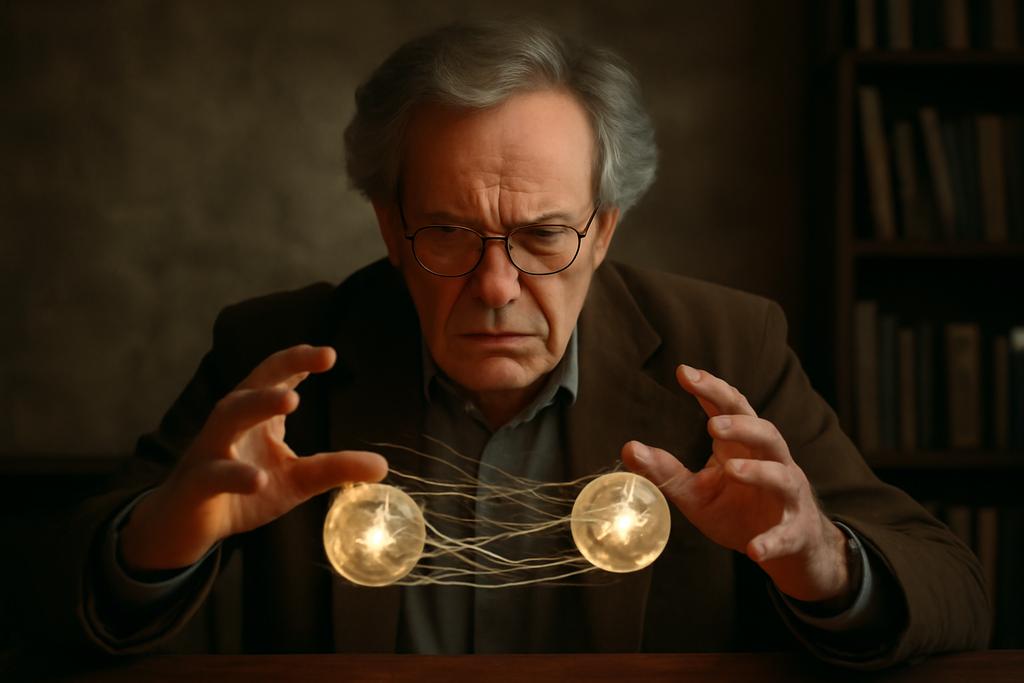Quantum Weirdness Meets Classical Limits
Quantum mechanics has a knack for defying our classical intuitions. One of its most baffling features is nonlocality: the ability of two distant particles to exhibit correlations so strong that no classical explanation without communication can reproduce them. This phenomenon, famously highlighted by Bell’s theorem, is not just a philosophical curiosity—it underpins emerging technologies like quantum cryptography and randomness generation.
But what if we try to simulate these quantum correlations using only classical resources? More specifically, how much classical communication would two separated parties need to mimic the outcomes of quantum measurements? This question is not only about understanding the boundary between classical and quantum worlds but also about the computational complexity of simulating quantum systems.
From Qubits to Higher Dimensions
For the simplest quantum systems—qubits, which are two-dimensional quantum bits—researchers have found elegant classical protocols that can reproduce quantum correlations exactly, provided a small amount of classical communication is allowed. The work of Toner and Bacon, and later Renner, Tavakoli, and Quintino, showed that just one or two classical bits suffice to simulate the statistics of entangled qubits or prepare-and-measure scenarios.
However, the quantum world is not limited to qubits. Higher-dimensional quantum systems, or qudits, offer richer structures and stronger correlations. Extending classical simulation protocols to these higher dimensions has been a longstanding challenge. Can classical communication still mimic quantum magic when the quantum systems grow more complex?
Cracking the Code of Classical Simulation
Researchers at the Universitat Autònoma de Barcelona, led by Mani Zartab and colleagues, have taken a fresh look at this problem. Instead of relying on the geometric intuition that works well for qubits, they developed a geometry-independent framework that generalizes classical simulation protocols beyond two dimensions.
Their key insight is to view the classical simulation as a process of weighted sampling over shared randomness. Imagine Alice and Bob sharing a random “basis” or measurement setting, but with a twist: the probability of choosing a particular basis depends on how well it aligns with the target quantum measurement. This alignment is quantified by a similarity function that generalizes the simple cosine similarity used for qubits.
To implement this idea, the team designed a protocol that uses a rejection sampling method—a classic statistical technique—to select shared randomness according to these weighted probabilities. This approach allows them to reproduce quantum statistics exactly for qubits and approximate them with remarkable accuracy for qutrits (3-dimensional) and ququarts (4-dimensional).
Testing the Protocols: Numbers Don’t Lie
To evaluate their protocol’s performance, the researchers ran extensive numerical simulations comparing it with five other known classical protocols. They measured the difference between the classical and quantum probability distributions using the Total Variation Distance (TVD), a rigorous metric for statistical closeness.
For qubits, their protocol matched the exact quantum predictions, as expected. But the real surprise came with higher dimensions. For qutrits, their method consistently outperformed others, offering the closest classical approximation to quantum correlations. Even at four dimensions, where the problem becomes significantly harder, their protocol remained robust and competitive.
Interestingly, the team also tested their protocol on structured quantum measurement setups known to maximally violate classical constraints (like the CGLMP inequalities). Their protocol maintained high accuracy, while some competitors faltered, highlighting its resilience.
Why Does This Matter?
This work sheds light on the subtle boundary between classical and quantum worlds. By pushing classical simulation protocols beyond qubits, it helps clarify how quantum advantages scale with system complexity. This has practical implications for quantum computing and communication, where understanding the classical cost of simulating quantum systems informs both algorithm design and security assessments.
Moreover, the authors suggest that the complexity of higher-dimensional simulations might be tamed using machine learning techniques. Early experiments indicate that neural networks can learn these classical protocols, hinting at a hybrid future where analytical insight and computational power join forces to unravel quantum mysteries.
Looking Ahead
While an exact classical simulation for arbitrary high-dimensional quantum systems remains elusive, this study marks a significant step forward. It offers a new lens to view classical-quantum boundaries and provides a robust tool for approximating quantum correlations in dimensions beyond two.
As quantum technologies advance, understanding these boundaries will be crucial—not only for harnessing quantum power but also for appreciating the profound strangeness of the quantum world that classical minds strive to emulate.
Reference: Mani Zartab, Giulio Gasbarri, Gael Sentís, and Ramon Muñoz-Tapia, Universitat Autònoma de Barcelona, 2025.










